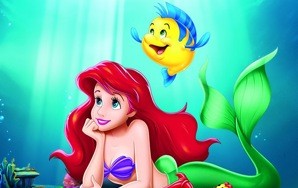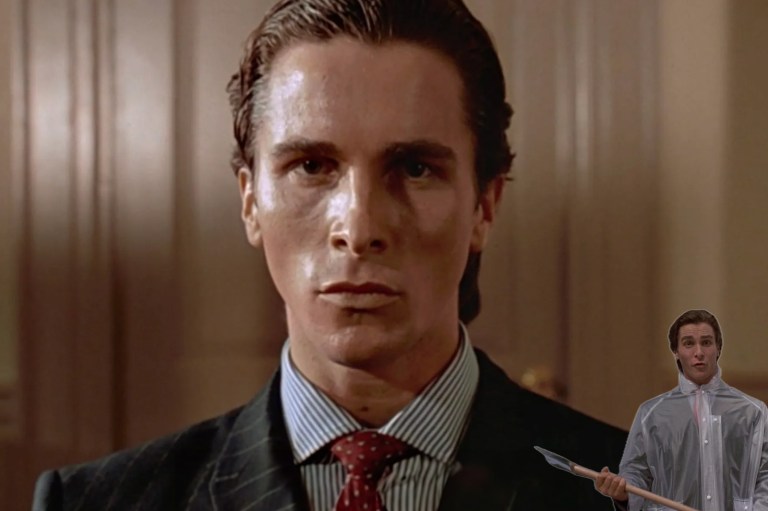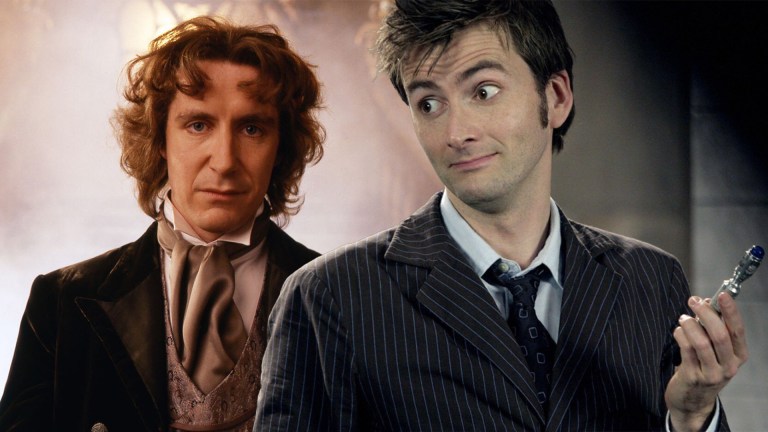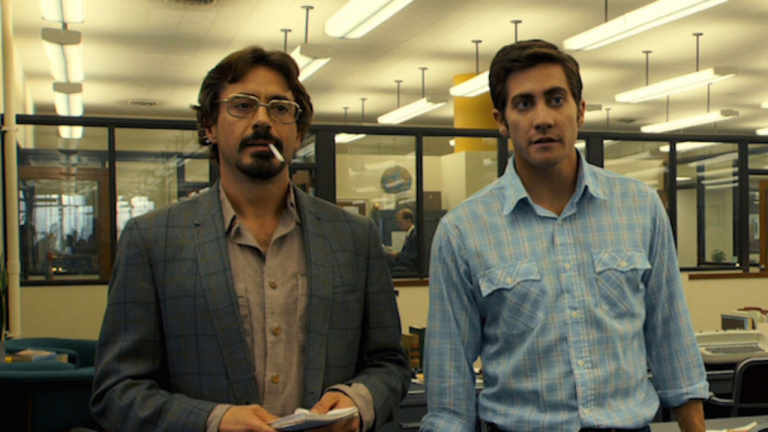
29 Little-Known Facts About Disney Movies That Will Blow Your Mind
5. The original title of 'The Lion King' was 'King of the Jungle' -- which was scrapped when the Disney team remembered that lions don’t live in the jungle.
By ![]() Nico Lang
Nico Lang
1. Although using big-name actors to sell your animated film is now de rigeur in Hollywood, Aladdin was the first to try it — on the back of Robin Williams’ superstardom. (Remember, this was 1992.) This worked, as the movie was easily the most profitable of the year.
2. However, Williams was still unhappy. He signed onto the film under the agreement that his voice work wouldn’t be used in the merchandising (e.g. Genie toys) and his character never account for more than a quarter of ad space for the movie. To get those box office dollars, Disney violated the agreement and Williams disavowed the movie. He did not appear in the sequel (replaced by Dan Castelanetta — who plays Homer Simpson) and was cut of the the later “Art of Aladdin” book. Disney’s CEO originally tried to win Williams back by buying him a Picasso painting, but Williams sent the gift back. Instead, they issued an apology to Williams, who later returned for the third installment in the series. Castelanetta was quickly dropped and all of his voiceover work trashed.
3. Sherri Stoner, who wrote the screenplays for My Favorite Martian and Casper and was a producer for Tiny Toon Adventures and Animaniacs, was the model that Belle and Ariel were based on. (Here’s an eerie side-by-side.) Although Jean Cocteau directed an earlier live action Beauty and the Beast, screenwriter Linda Woolverton admits that she didn’t base her characterization of Belle off of Cocteau. She pulled Belle from Little Women — with a dash of Katharine Hepburn thrown in for good measure.
4. The Little Mermaid is filled with references to other Disney films. Much of the style and technique was pulled from Disney classics like Sleeping Beauty and Snow White, and The Little Mermaid was the first since Fantasia to rely heavily on special effects — which took 10 animators over a year to perfect. In addition, Kermit the Frog, Goofy, Mickey and Donald Duck all appear in the crowd during King Triton’s arena entrance. Ursula was partially based on Madame Medusa from The Rescuers. The rest of the inspiration for the character came from Divine, the iconic drag queen who was John Waters’ muse.
5. In the movie, Ariel’s father, Triton, is the king of the ocean. However, Greek mythology cast Posideon as overlord of the seas — with Triton as one of his sons. Perhaps there’s a backstory we’re missing? I want to see that movie.

6. Many Disney movies are supposed to have references to sex in them, but rumors of sexual misconduct are greatly exaggerated. The priest’s “boner” in The Little Mermaid is actually his knee. In The Lion King, there’s a scene where you are supposed to be able to pause the film and see “SEX” written in the sky. The clouds actually read “SFX,” which is a plug for the movie’s special effects department. Basically, we’re all just pervs who are making shit up.
7. The original title of The Lion King was “King of the Jungle” — which was scrapped when the Disney team remembered that lions don’t live in the jungle. (However, many of the film’s promo shirts still read “King of the Jungle” anyway. Oops!) The original plot of the film was swapped for a “Bambi in Africa meets Hamlet” story, which is how the studio described the project to screenwriter Irene Mecchi when she was brought on. Mecchi called it “Bamlet” for short.
8. As originally conceived, Stitch was created to be “intergalactic gangster” and Jumba a gang member who hunts him down, after a heist goes terribly wrong. In this version, Stitch wasn’t going to speak. However, the studio realized that children may have a difficult time relating to a cuddly hardened criminal and re-designed the character as an unfortunate genetic experiment. Interestingly, Ving Rhames’ Cobra Bubbles character was clearly based off his gangster character in Pulp Fiction. They even have the same earring.
9. Lilo and Stitch and Princess and the Frog were the only Disney films in the Aughties to both be critical and commercial successes.
10. Bambi only has 1,000 words of spoken dialogue in the entire movie. Of all Disney characters, Dumbo speaks the least — having no actual lines of dialogue during the film. Coming in a close second is Aurora of Sleeping Beauty. Our passive heroine counts for 18 whole lines and 18 minutes of screentime during her own movie, in which she’s relegated to a supporting role. (Her last actual line occurs 39 minutes into the movie.) The movie’s main characters are actually the three fairies who look out for her safety. Despite not doing anything, she’s actually not the least popular Disney princess in terms of merchandise sales. Those awards go to Pocahontas and Mulan, the non-white ones, although Nerve.com did call Aurora the “least feminist” princess. That’s gotta count for something.

11. There were originally seven fairies instead of three, and at one point, the fairies were all supposed to look alike, which would have been incredibly confusing.
12. For the part of Maleficent, Disney offered it to Eleanor Audley, who so memorably played the Evil Stepmother in Cinderella. However, Audley initially turned it down due to a battle with tuberculosis, but later changed her mind. One of Walt Disney’s personal favorite voice actors, Audley played Eddie Albert’s mother on the television show Green Acres, even though she was only a year older than Albert (like Anne Bancroft in The Graduate, who was nearly the same age as her lover, Dustin Hoffman). So, basically, Audley’s entire career was a commentary on the ways in which Hollywood treats older women.
13. Although Cinderella’s beau is often referred to as “Prince Charming,” he never actually gets a name in the film at all. Meaning that Cinderella ends up running away with a man who is not only a total stranger — but with whom she isn’t even a first-name basis.
14. Cinderella was a huge success for the studio, a financial gamble that paid off by helping to finance future Disney productions throughout the 1950s. The studio weighed whether to release it before or after Alice in Wonderland, deciding to put Cinderella out first. This was a wise move, as Alice in Wonderland was a box office disaster, like most other movies based on the Lewis Carroll property. (Tim Burton lifted the curse.) However, the movie gained a huge cult following, becoming the first of Disney’s theatrical releases to be aired on television. To fit the time slot, it had to be chopped down to be an hour long.
15. Early versions of Alice in Wonderland were written by Aldous Huxley, who envisioned the character of Alice to be a cartoon character who dropped into scenes from Lewis Carroll’s life, all of which would be filmed in live-action. Walt Disney shot down Huxley’s ideas, deciding them to be too “intellectual” for the audience, and Huxley left the project, receiving no credit for his work on the film. The character of the Jabberwock (from Lewis Carroll’s “Jabberwocky”) was also cut from the movie, as producers felt he was too “frightening” for the young’uns. The movie is based on a drug trip and heavily features opium — and that’s what eyebrows were raised over?

16. In the first drafts of Lady and The Tramp, the Tramp character was originally referred to as Homer, followed by Rags and Bozo. A script from back in 1940 (when the movie was first being tossed around) called the Siamese cats “Si” and “Am” (very clever, I know), but they were later renamed “Nip” and “Tuck” — like the later Ryan Murphy show. Throughout the film, Darling’s actual name is never clarified. The audience isn’t sure if her given name is Darling — or that’s just a nickname or term of endearment she’s referred to. If that’s her actual name, “Darling Dear” certainly has an odd ring to it.
17. 101 Dalmatians is one of Walt Disney’s all-time biggest successes, the second most successful animated film in their canon. The only movie to make more money was Snow White and the Seven Dwarfs. Each would have pulled in just over $800 million in today’s dollars. (Note: They’ve each been re-released several times.) The eleventh most successful domestic movie in adjusted dollars, 101 Dalmatians was such a big hit in the 60s that its release led to a surge in the breeding of Dalmatians, which parents hoped would make a cute pet for your kid. However, the high-energy breed isn’t always suitable for children, which led to a number of attacks and mishaps, and this led to widespread abandonment of Dalmatians at dog shelters.
18. For Snow White and the Seven Dwarfs, a number of ideas were proposed for the titular little folks’ names. There were fifty in total. The rejected ones include: Hoppy-Jumpy, Biggy-Ego, Biggy-Wiggy, Nifty, Jaunty, Gabby, Dirty, Gaspy, Gloomy, Shifty, Blabby, Hotsy and Deefy — who was dropped at the last-minute for Sneezy. Another character was going to be named “Awful,” described as a dwarf who “steals and drinks and is very dirty.” In honor of the film, the Academy Awards presented Snow White with its own special award, which consisted of a regular sized Oscar trophy flanked by seven teenier ones. AMPAS can be real cute sometimes.
19. If you know anything about Disney movies, you know the studio has a grand history of racial insensitivity (See: “Song of the South,” for example.) Princess and the Frog was the studio’s first to feature an African-American princess, a step forward for the studio. However, a number of changes had to be made to the film, at the request of black focus groups. For instance, the original title of the film was “The Frog Princess,” which made it sound like Tiana was an animal — and a very unattractive one at that. The character’s name also had to be changed from Maddy, which sounds dangerously close to “Mammy,” and a storyline about her being a maid was cut from the movie.
20. The movie Pocahontas took five years to complete, because of the complex techniques required to perfect the movie’s style and motion. For this reason, many of the studio’s animation team members elected to work on this instead of The Lion King, seen as less of a “prestige” project. When the movie was originally conceived, John Candy was cast as “Redfeather,” Pocahontas’ talking turkey sidekick. Along with Eddie Murphy and Steve Martin, Candy was originally in the running for the role of the Genie in Aladdin. However, Candy died during the production process and the character was dropped.

21. Mulan was instrumental in launching the career of Christina Aguilera. Her song for the film, “Reflection,” made for her first major American release as a recording artist (yes, before “Genie in a Bottle.”) The studio was so impressed with her work that Aguilera ended up landing a record deal with RCA for her first self-titled album. As a former Mickey Mouse clubber, Disney was correct in believing in her talents. That album scored her three number one singles and an award for Best New Artist — although she hasn’t had a solo chart-topper since.
22. Mulan’s story was conceived by Robert D. San Souci, retold from an earlier true story, who imagined the character’s companion as a giant dragon. However, the studio was apprehensive about a sidekick who might scare the shit out of its core audience of youngsters, and San Souci informed them that Chinese myth allowed for smaller dragons. So they shrunk Mushu to be wee. The character references this in the film when he says, “I’m travel size for your convenience! If I was my real size your cow here would die of fright.”
23. The most expensive film in Disney history, Tangled was originally conceived as a semi-sequel to Enchanted, but executive producer Glen Keane rejected that idea in place of something more fantastical. Because The Princess and the Frog made less than the studio expected it to (but still more than other recent Disney animated efforts), the studio supposed that the “princess” storyline kept young boys away. Thus, the movie was restructured to give Ryder more of a role in the narrative. Early trailers emphasized his character over Rapunzel’s. This clearly worked in the movie’s favor, as Tangled made twice what The Princess and the Frog grossed in theatres.
24. To conceive the way that Tarzan would move swinging vines in the jungle, Disney animators studied the techniques of Tony Hawk. To pay overt tribute to Hawk, the team created a elaborate scene where Tarzan slid down tree branches as if on a surfboard. However, not everyone was impressed with Disney’s achievement. One enraged audience member wrote into the New York Times to complain about the character’s exagerrated athleticism and physique, worrying about the message it would send young boys. I guess he was less concerned that children were being encouraged to hang around with dangerous animals — but to each their own.
25. When The Princess and the Frog came out, lead actress Anika Noni Rose lobbied that the studio make the character left-handed, as the actress herself is left-handed. However, when Peter Pan was in development, the studio had to change Captain Hook from being a right hook (like in the play) to a left hook — as they worried that being a right hook would restrict his range of motions too much. (I guess they never met a lefty?) However, it didn’t matter, because Walt Disney was unhappy with the resulting film anyway. Despite being highly profitable for Disney, Walt opined that the title character was too “cold and unlikable.” It was, however, Michael Jackson’s favorite movie, so there’s that.

26. According to the directors of The Hunchback of Notre Dame, the three gargoyles may only exist as figments of Quasimodo’s subconscious, fragments of the character’s own identity. (Which I think makes him insane.) However, this interpretation doesn’t make sense within the context of the film, as the gargoyles often interact with reality and change the environment around them. Two of the gargoyles are named “Victor” and “Hugo,” in order to pay obvious homage to the author whose book the film was based on. The third is “Laverne,” named after Laverne Andrews of The Andrews Sisters. One of these things is not like the others.
27. The Disney films feature numerous changes to the source material. For instance, Pocahontas didn’t stay in America and Tarzan wasn’t adopted by gorillas (instead, they were “apes,” specifically chimps). One very glaring amendment was for Hercules, based off the Greek myth of a hero charged with performing ten “labors” to atone for killing his children, after he was driven to insanity by his stepmother (who was also Zeus’ sister). All of this is obviously left out in the movie, as is Hercules’ real name. It’s “Heracles,” inspired by his stepmother-aunt mother Hera. This was later Romanized as “Hercules,” which became the more well-known version of his name.
28. Although the Looney Tunes and Disney cartoons were competing properties, Mel Blanc (the man behind Bugs Bunny, among others) appeared in two Disney films. Blanc filled in for Eddie Collins as the voice of Dopey in Snow White and the Seven Dwarfs after Collins’ untimely death and originally voiced Gideon’s lines in Pinocchio. However, those were later cut from the movie entirely when the producers decided he would be mute — although you can still hear Blanc’s hiccups in the resulting film.
29. In The Jungle Book, The Beatles were originally intended to voice the Vultures. Although Beatles manager Brian Epstein was onboard, Lennon vehemently declined, saying that Disney should get Elvis Presley to do it instead (which as a jab at Presley’s unfortunate film record). Because they couldn’t land the Beatles, the Disney company did the next best thing: ripped off their likenesses. (The ugly bald one is obviously Ringo. Poor Ringo.) Walt Disney died during production, making it the last film he personally oversaw.
Note: All information direct from IMDB, with a little help from Box Office Mojo and Wikipedia. ![]()











